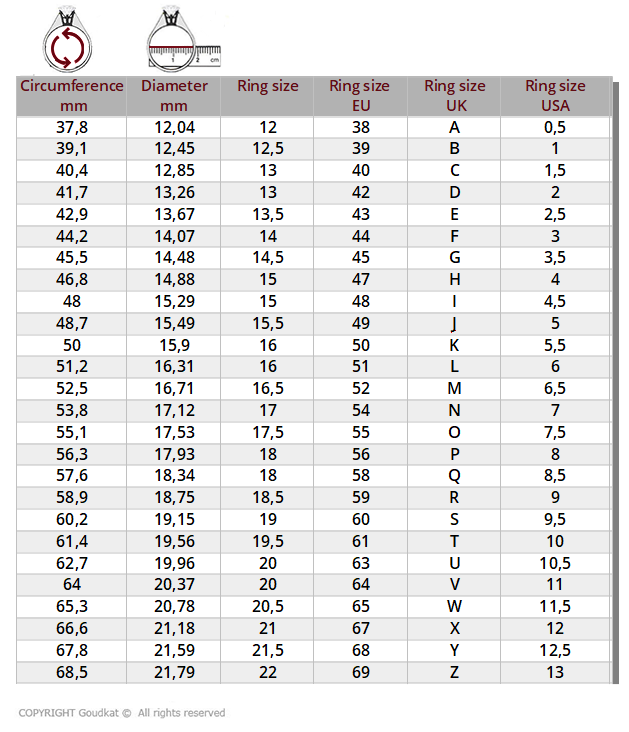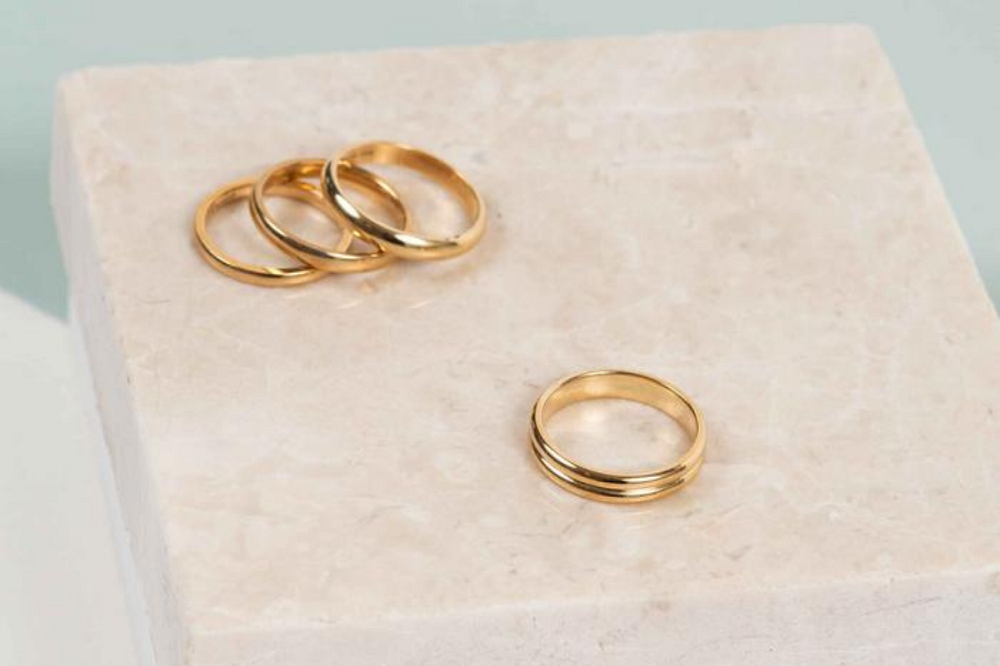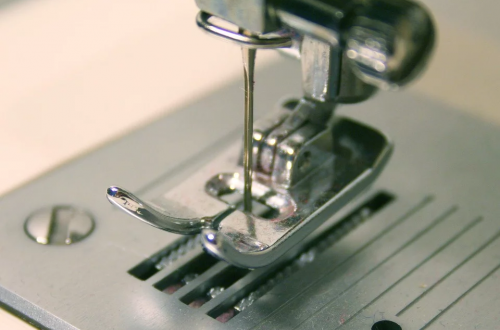With earrings and necklaces, you don’t need to worry too much about sizing but rings are a must! Whether you’re looking to treat yourself to a ring you’ve had your eye on or you’re looking for the perfect ring for your other half, you need to get the size right. There’s nothing worse than popping the question with the perfect ring and having to return it! Here’s our guide on how to measure ring size and our top tips on how to get the best results.
Understanding the Ring Chart
Before we get into tips and tricks, let’s explain how the ring chart works. Of course, there’s centimetres, millimetres and so on, but ring size is measured in letters. This makes measuring your finger easier, less complicated and gives you more options and sizes that will fit you perfectly.
Below is a ring chart that explains what letters correspond to diameter and circumference in millimetres. In this article, we’re referring to UK sizes – please keep this in mind as US measurements are different. Ring sizes start at ‘A’ which is the smallest size possible and go up to ‘Z’ – the largest size.
Most jewellery shops and websites will have a chart like this for you and if you’re in store, a jeweller will measure your finger for you. However, if you’re at home and looking for something online, we’ve outlined 3 ways to measure your ring size at home.

How to measure your ring size
To measure your ring size at home, there are 3 ways to do this. Whatever ring you have in mind, pick the finger you’re buying it for or measure all of them for future reference!
The first way is to order a ring sizer online. These are inexpensive – typically under £10 – and an easy and accurate way to figure out your ring size. It wraps easily around your finger and will show you the letter measurement as well as cm/mm measurements.
The second way (and easiest way) is to measure the inside diameter of a ring you already have. Presumably, you already have a ring that fits you perfectly and whether you’re picking a layering ring or a ring for a different finger, you can base the size off what you already have. Also, if you’re looking for a ring for your other half and want to keep it a surprise, you can borrow one of their rings to figure out their size without them knowing!
The third and best way to do this at home is to measure your finger yourself. That might sound confusing but it’s very easy. First, use a piece of string, floss or strip of paper to measure your finger. Aim for string or paper that is no wider than 1.4 cm or ½ an inch. Wrap whatever you’ve chosen around the base of your finger – or the top of your knuckle if you’re looking for a midi ring.
Use a pen to mark the point on the string or paper where it overlaps on itself or forms a circle. This should be snug and well fitted to your finger but not tight enough that it will turn your finger blue, leave a mark or cut off any circulation. You should also make sure that it won’t slip off easily. Once you’ve done that, measure the length of the paper or string from the end of it to the pen mark. Whether it’s in cm or mm, this is the measurement of your finger. You can then use the chart to determine your ring size in letters. Most sites and shops tend to use letters so it’s great if you can figure out what letter your finger is using your measurements.

Top tips
While we’ve explained how to measure ring size, there are also tips and tricks to ensure you get the perfect fit.
1. Measure your finger in the middle or the end of the day
Fingers are easily affected by weather, water retention, age, weight and pregnancy. In the morning, your fingers are typically swollen and can be a lot thinner in the evenings. We recommend sometime in the middle of the day or towards the evening as your fingers will typically be at a normal size. Make sure your fingers aren’t too hot or too cold as this will affect finger size.
It’s important to keep in mind that if you’re measuring for one finger, it might not be the same size as the same finger on the other hand. Your dominant hand tends to be bigger than your non-dominant hand, so don’t assume they’ll be the same size by measuring them separately.
2. Measure the inside, not the outside
When measuring your finger, make sure you measure the inside of your ring and not the outside. This might seem a bit confusing but if you’re basing your size off an existing ring, you can mistakenly measure the thickness of the ring and accidentally include its decorations. If you do that, you’ll get a misshaped ring which you’ll have to return, so make sure you measure the inside.
3. Be careful with large knuckles!
If you have large knuckles, you should choose a size that you need to push quite firmly over your knuckle. This is where most mistakes happen when you forget about the knuckle! It’s important that your ring fits snuggly but if it’s a struggle to get over your knuckle, you need to pick a bigger size. On the other hand, if you have straighter fingers where your knuckle is the same size as the rest of your finger, make sure it’s snug to avoid it rolling off.





